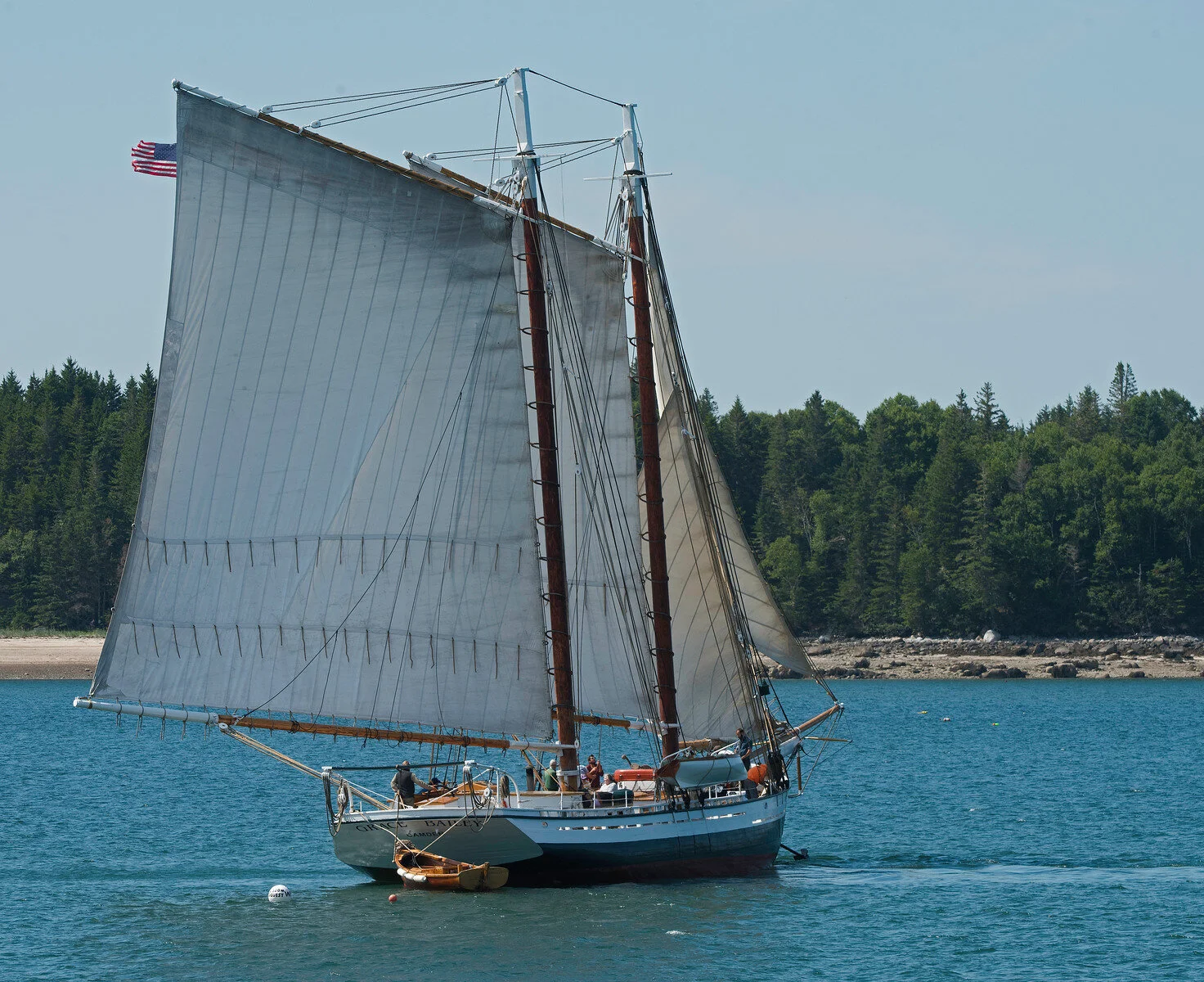Yesterday, the 118-foot Coastal Schooner Grace Bailey sailed into Great Cove to shelter for the night. As you see, she was pointing into the northwesterly wind as the dying sun gave us a good idea of what coasting cruisers looked like when they hauled goods and materials to New England ports in the 19th and early 20th Centuries:
As with most of her kind, Grace has two “bald” masts (devoid of top masts) and a low-slung hull sheering up to a long cutter bow. She is flat bottomed for shallow waters, but has a retractable keel (“centerboard”) for hard sailing. She has no internal engine.
Leighton Archive Image
These “coasters” were the 18-wheel trucks during their commercial times of primitive roads. The vessels stayed close to the shore and were not built to withstand major open sea storms the way the much bigger square-sailed merchants were. (Those deep-water sailors looked down on coastal sailors, dismissing them as sailors who set their courses “by the bark of a dog,” according to Polly Burroughs’ A Celebrated Schooner Life.)
Leighton Archive Image
Grace was built in 1882 in Long Island, New York. She was named after the just-born daughter of her owner, Edwin Bailey. She was rebuilt in 1906 and renamed Mattie, the nickname of Edwin’s granddaughter Martha. In 1990, after being restored and reconfigured as a passenger ship, she was rechristened with her original name. (Brooklin, Maine)


